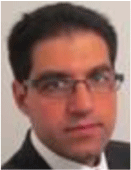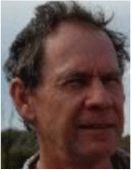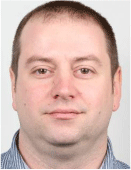Innovation and instrumentation in CO2 monitoring wells for reservoir surveillance and advanced diagnostics
Paul Barraclough A F , Mohamad Bagheri A , Charles Jenkins B , Roman Pevzner C , Simon Hann D , Kelvin Wuttke D , Stoyan Nikolov E and Michael Mondanos EA CO2CRC Ltd, Argyle Place, Melbourne, Australia.
B CSIRO Black Mountain, Canberra, Australia.
C Curtin Centre for Exploration Geophysics, Curtin University, Perth, Australia.
D InGauge Energy, Milton, Brisbane, Australia.
E Silixa Ltd, Elstree, Hertfordshire, United Kingdom.
F Corresponding author. Email: paul.barraclough@co2crc.com.au
The APPEA Journal 61(2) 530-535 https://doi.org/10.1071/AJ20188
Accepted: 3 March 2021 Published: 2 July 2021
Abstract
In 2015, CO2CRC Ltd embarked on an ambitious plan to field test innovative technologies to monitor a CO2 plume injected into a saline aquifer with a view to address many of the economic and environmental concerns frequently associated with commercial carbon capture and storage project’s long-term monitoring programs (Jenkins et al. 2017). It was called the Otway Stage 3 Project and it was focused on testing the technologies of seismic and downhole pressures applied in unique ways to monitor an injected plume of approximately 15 000 tonnes as it developed and migrated in the subsurface. To achieve this goal, five new wells were drilled at CO2CRC’s Otway International Test Centre – one dedicated to injection (drilled in 2017) and the remaining four wells (drilled in 2019) were used for monitoring purposes. Each monitoring well and the gas injection well, were outfitted with fibre optic systems installed and cemented outside the casing (specifically for seismic monitoring) and with pressure gauges installed at the reservoir depth. The challenge of the installation was to install fibre optics outside of the casing, cement them in place securely and to perforate the wells without damaging the fragile TEF bundles. While the installation of the pressure gauges in the injection well was a conventional in-tubing gauge mandrel, the installation in the monitoring wells, which were to be used for water injection as well as pressure monitoring, used a less conventional deployment method, where the gauges were instead installed using a more economic and flexible approach by suspending the gauges from the wellhead via a hanger system. This not only ensured continuous offline monitoring of the downhole well pressures and temperatures, but also facilitated future well operations by simple wireline retrieval and deployment of the gauge, forgoing the need for a workover rig. The various systems were commissioned over the period of March–June 2020 and were in full operation in the second half of 2020 – all successfully operating and acquiring baseline data remotely as designed. The Stage 3 Project commenced gas injection operations in December 2020 and data acquisition using the innovative systems have commenced successfully.
Keywords: CCS, CCUS, greenhouse gas sequestration, monitoring and verification, pressure tomography, pressure inversion, VSP, seismic, fibre optics.

Paul Barraclough is an Oil and Gas Professional who commenced a career as a Chemical Engineer working with BHP Engineering in the western Australian Pilbara region and subsequently moved into the Oil and Gas Service Industry to embark on an international career spanning the next 17 years. Opportunities with the industry’s largest Oil and Gas service company, working within the Testing Services Reservoir Characterisation Group, spanned more than a dozen countries and several highly technical field and office-based roles with a continuing focus on reservoir measurements and characterization as well as supporting roles with personnel and HSE. Paul’s current role as Stage 3 Project Manager with CO2CRC Ltd, focuses on project management for the field deployment and testing of innovative CCS technologies and solutions for industry, starting in 2018. Field execution for this project – named CO2CRC’s Stage 3 Project – commenced in earnest in 2019 with the drilling and completion of four new in-field wells to facilitate the testing of efficient and economic subsurface monitoring solutions for the CCS industry. The project will continue through to an operational phase in 2020/21 to be managed through to conclusion in 2022. |

Dr Mohammad Bagheri is currently working as a subsurface manager with CO2CRC. He is a reservoir engineer with 19 years of oil and gas, as well as CCS, experience in Australia, Europe and the Middle East. Mohammad holds a PhD in petroleum engineering from Sharif University of Technology. He started his career with NIOC in 2003 as a field engineer and subsequently worked for Statoil, Schlumberger, British Gas and Santos as both production and reservoir engineer in different time periods between 2005 and 2017. Mohammad is recognised as a chartered professional engineer with Engineers Australia. He is a member of Board of professional Engineers of Queensland (RPEQ) and certified by SPE as a petroleum professional. Mohammad has been appointed as the program chair for the Victorian and Tasmanian chapter of society of Petroleum Engineers since 2018. |

Charles Jenkins is an applied physicist with a PhD from the University of Cambridge and is with CSIRO Australia and the umbrella research consortium CO2CRC Ltd. He previously worked in a variety of instrument design roles, including 7 years with Schlumberger. Since 2008, he has been involved in the design and operation of the demonstration CO2 storage project ‘the Otway Project’, where his principal responsibilities were initially in managing the monitoring and verification programme, with associated experience in project design, risk assessment, regulatory compliance and public relations. He is now the Science Lead for the current CO2 injection experiment at the Otway site, ‘Stage 3’. Charles is a Fellow of the UK Institute of Physics and an Associate Editor of the International Journal of Greenhouse Gas Control. |

Dr Roman Pevzner has a PhD in Geophysics (2004) from Lomonosov Moscow State University (Russia). He was heading software development department in DECO Geophysical (Moscow, Russia) service company in 2002–2008. At the same time he was involved in research and teaching at Geological Faculty of LMSU, Seismometry and Geo-acoustics Department. Dr Pevzner was appointed as A/Professor in Discipline of Exploration Geophysics at Curtin University (Perth, Australia) in 2008, progressing to Professor in 2018. His main areas of interest are distributed fibre optic sensing, signal processing, borehole seismic methods and time-lapse seismic surveys. He has coauthored 3 book chapters, 60 journal papers and more than 170 refereed conference. |

Dr Simon K Hann has 23 years operational experience including conventional oil and gas, geothermal, HPHT, CCS and coal seam gas drilling and completions, with 4 years offshore experience including semisubmersible tender assist, drill ship and jack-up. Simon has 16 years management experience including roles as Operations Manager, Drilling Team Leader, and Drilling and Completions Manager; demonstrating competency in management of rig operations, well design, complex project planning and execution. In management roles, Simon has proudly achieved and maintained industry leading EHS performance across operations spanning northern Europe, West Africa, SE Asia and Australia. Simon is currently Director and Principal Engineer at InGauge Energy, since cofounding the business in 2013. InGauge is now the largest independent provider of onshore Well Engineering & Project Management services in Australia. |

Kelvin Wuttke, BE (Mech), MBA, CPEng, is a Chartered Professional Engineer (Petroleum) with 28 years of experience across a wide range of upstream oil and gas projects including conventional and unconventional, onshore and offshore. Kelvin has project managed significant pipeline and facility projects as well as well drilling, completion, stimulation and abandonment programs. Kelvin is currently a Director and Principal Engineer with InGauge Energy, the largest onshore well engineering consultancy in Australia. |

Stoyan Nikolov joined Silixa as a Field Engineer for the oil and gas sector. He has an all in-depth technical knowledge of optical fibre installation, and significant expertise in operations, project engineering and management. Stoyan has over 10 years of field experience as a field and operation engineer and in upstream midstream and downstream optical fibre installations. He holds a Masters in Finance and has been trained as an installer for Fibre Networks. He has carried out installations of optical fibre sensing monitoring solutions across the World and has extensive experience in seismic acquisitions and surveys using Distributed Acoustic Sensing. In the last couple of years, Stoyan has been involved in project management for the environment and alternative energy sectors. |

Michael Mondanos joined Silixa as a Business Development Manager for industrial monitoring applications. He has an all in-depth technical knowledge of optical fibre sensing systems, and significant expertise in operations, project management and strategic planning. Michael has over 15 years of field experience as a senior engineer and project manager in upstream and downstream optical fibre installations. He holds a Masters in Communications & Radio Engineering from King’s College, University of London, a Diploma in Optical Fibre Sensors and a PhD in Distributed Optical Fibre Sensing Systems from Imperial College, University of London. He has worked within both university and industrial organizations in the development of optical fibre components for all in line monitoring systems. In the last couple of years, Michael has been involved in developing applications based on distributed optical fibre sensing for the environment and alternative energy in collaboration with major research institutions and academia. |
References
Brauchler, R., Hu, R., Dietrich, P., and Sauter, M. (2011). A field assessment of high-resolution aquifer characterization based on hydraulic travel time and hydraulic attenuation tomography. Water Resources Research 47, W03503.| A field assessment of high-resolution aquifer characterization based on hydraulic travel time and hydraulic attenuation tomography.Crossref | GoogleScholarGoogle Scholar |
Correa, J., Egorov, A., Tertyshnikov, K., Bona, A., Pevzner, R., Dean, T., Freifeld, B., and Marshall, S. (2017a). Analysis of signal to noise and directivity characteristics of DAS VSP at near and far offsets — A CO2CRC Otway Project data example. The Leading Edge 36, 994a1–994a7.
Correa, J., Freifeld, B., Pevzner, R., Wood, T., Tertyshnikov, K., and Bona, A. (2017b). Continuous DAS VSP monitoring using surface orbital vibrators: field trials for optimal configuration at the CO2CRC Otway Project. 80th EAGE Conference & Exhibition 2017, Copenhagen, Denmark, Expanded abstracts, WS08.
Correa, J., Pevzner, R., Popik, S., Tertyshnikov, K., Bona, A., and Freifeld, B. (2018). Application of 3D VSP acquired with DAS and 3C geophones for site characterization and monitoring program design: preliminary results from Stage 3 of the CO2CRC Otway project. SEG Technical Program Expanded Abstracts 2018, 4933–4937.
| Application of 3D VSP acquired with DAS and 3C geophones for site characterization and monitoring program design: preliminary results from Stage 3 of the CO2CRC Otway project.Crossref | GoogleScholarGoogle Scholar |
Dance, T., LaForce, T., Glubokovskikh, S., Ennis-King, J., and Pevzner, R. (2019). Illuminating the geology: post-injection reservoir characterisation of the CO2CRC Otway Site. International Journal of Greenhouse Gas Control 86, 146–152.
| Illuminating the geology: post-injection reservoir characterisation of the CO2CRC Otway Site.Crossref | GoogleScholarGoogle Scholar |
Gunning, J., Ennis-King, J., LaForce, T., Jenkins, C., and Paterson, L. (2020). Bayesian well-test 2D tomography inversion for CO2 plume detection. International Journal of Greenhouse Gas Control 94, 102804.
| Bayesian well-test 2D tomography inversion for CO2 plume detection.Crossref | GoogleScholarGoogle Scholar |
Jenkins, C. R., Cook, P. J., Ennis-King, J., Undershultz, J., Boreham, C., et al. (2012). Safe storage and effective monitoring of CO2 in depleted gas fields. Proceedings of the National Academy of Sciences 109, E35–E41.
| Safe storage and effective monitoring of CO2 in depleted gas fields.Crossref | GoogleScholarGoogle Scholar |
Jenkins, C., Marshall, S., Dance, T., Ennis-King, J., Glubokovskikh, S., Gurevich, B., La Force, T., Paterson, L., Pevzner, R., Tenthorey, E., et al. (2017). Validating subsurface monitoring as an alternative option to surface M&V-the CO2CRC’s Otway Stage 3 injection. Energy Procedia 114, 3374–3384.
| Validating subsurface monitoring as an alternative option to surface M&V-the CO2CRC’s Otway Stage 3 injection.Crossref | GoogleScholarGoogle Scholar |
Yavuz, S., Isaenkov, R., Pevzner, R., Tertyshnikov, K., Yurikov, A., Correa, J., Wood, T., and Freifeld, B. (2020). Processing of continuous vertical seismic profile data acquired with distributed acoustic sensors and surface orbital vibrators. In ‘EAGE Workshop on Fiber Optic Sensing for Energy Applications in Asia Pacific’, Kuala-Lumpur, Malaysia, pp. 1–5. European Association of Geoscientists & Engineers , .
| Processing of continuous vertical seismic profile data acquired with distributed acoustic sensors and surface orbital vibrators. In ‘EAGE Workshop on Fiber Optic Sensing for Energy Applications in Asia Pacific’, Kuala-Lumpur, Malaysia, pp. 1–5.Crossref | GoogleScholarGoogle Scholar |


